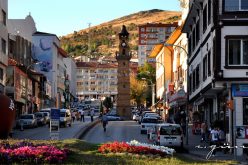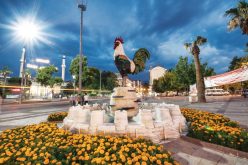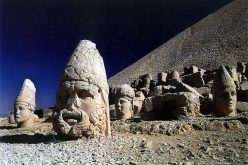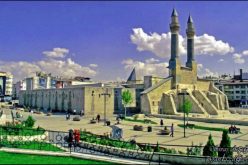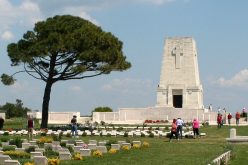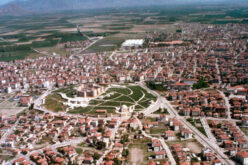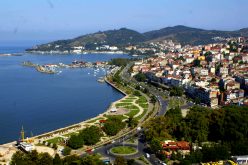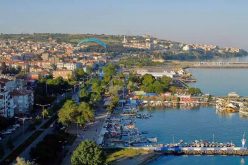Kahramanmaraş
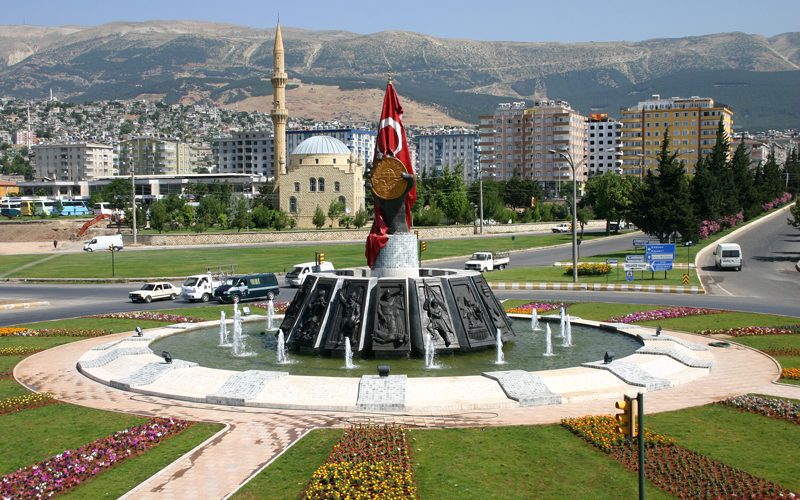
Kahramanmaras
The province of Kahramanmaras is located inside the borders of Eastern Anatolia Region, which used to be known Maraşin the past, is a city in Turkey. The province is famous with its peculiar ice cream. Kahramanmaras has an important tourism potential with its caves, Külliye of Eshab-i Keyf and its plateaus
History of Kahramanmaraş dates back to pre-historic times. The city was founded during the Hittite Empire sovereignty ca. 1000 BC. It was called “Germanicia Caesarea” during the Roman Empire and”Germanicia-Marasion” during the Byzantine Empire sovereignty. After A.D. 1097, it became an important town of Lesser Armenia and was taken by the Seljuks in 1147. In the 16th century, the Ottoman Osmanli Empire Selim I, took the control of Maraş. Because of its heroic defense against the French Armenian Legion during the War of Independence, Maraş receieved an honour medallion. This heroic event is also known as the Sütçü İmam Incident. On October 7, 1973 it got its modern name when the Grand National Assembly (TBMM) of Turkey added”Kahraman” (means Hero in Turkish) to the name Maraş.
Places to Visit;
Kahramanmaraş Castle is located on the center of the province over a piled hill. The castle was inhabited and used in the Hittite, Roman and Ottoman periods and had some restorations in various periods.
Hurman Castle is located in the boundaries of the Marabiz village of the Afşin District, over a steep hill which is to the west of Hurman creek. The certain construction date is not known. But it is assumed that the castle was constructed in the Byzantine period, when the construction technique is taken into account. The inner part of the castle contains a water cistern, granary, soldier barracks and a church.
Ceyhan Bridge is located on the old Kahramanmaras – Göksun road over the Ceyhan River. It was assumed to be constructed in the 16th century.
Külliye and Mosques
The most important mosques of the Kahramanmaraş Province could be counted as Ulu Mosque, Elbistan Ulu Mosque and Hatuniye Mosque. The Taş Theological School constructed by the Ulu Mosque was dedicated to the daughter of Dulkadirli Alâüddevle Bey.
Eshab-i Kehf (Seven sleepers) Külliye located on a steep hill which is 8 km. west of the Afşin District is from 12th century. This group of buildings are composed of a Mosque, a caravansary, a Ribat and numerous undetermined small structures.
Yavşan Plateau is located on the elevations which are to the south of the Sir dam lake. The plateau is a natural fauna and flora with its rich forest texture, water springs and endemic plantation. The altitude of the plateau reaches up to 1300 meters. The Yavşan plateau is an important source for camping and climate alteration cures.
Başkonuş Plateau is located on the Kahramanmaraş – Andirin highway, in the vicinity of Yenicekale district and the region has a rich forest texture displaying the plateau characteristics. The altitude is l785 meters. There is a deer breeding farm at the Başkonuş plateau. The electric, telephone, road facilities and the environmental arrangement of the region is completed and facilities belonging to the Forest administration (accommodation, gasino and restaurants) are present in the region.
Eshab-i Keyf Cave The cave is located in the Afşin district. The cave is believed to be the cave in which seven Roman young man had slept for 200 years and than awake.
Döngel Cave is located on the Kahramanmaraş – Kayseri highway. The distance to the city center is 57km. The cave and its environ had been inhabited in the prehistoric periods. The Döngel Creek is flowing inside the Döngel cave forming a large waterfall. There is a camp belonging to the Youth and Sports City Directorate nearby the cave.
Bulut Deligi Cave is located southwest of Pazarcik district and is a cave displaying fossil properties and the development of the cave is halted. The cave contains numerous and beautiful stalagmites, stalactites and pillar damlataş formations.
Göksun Büyükkizilcik Mineral Water Spring is located at 16 km. distance to the Büyükkizilcik village of Göksun District. The mineral water is determined to cure the problems of digestion, urethra and kidney systems and also to the skin diseases by the means of bathing.
Ekinözü (Cela) Mineral Water is 151 km. north of Kahramanmaras Province and at 20 km. distance to the district center. The waters of the mineral water is known to cure skin, stomach and kidney diseases.
Kahramanmaras Museum is composed of three main sections. In the archeological findings section, various objects and tools, statuettes, cooked earth and glass pottery and jewelry from the Prehistoric, Early Bronze, Hittite, Iron Age, Roman and Byzantine periods are exhibited. In the Ethnography Section, the local traditional embroidered man and woman clothing, various jewelry, forge embroidered copper pottery, nacre embroidered wooden furniture and frames, silver – nacre embroidered wooden jewel boxes and various battle equipment is exhibited.
Write a Comment
Only registered users can comment.




